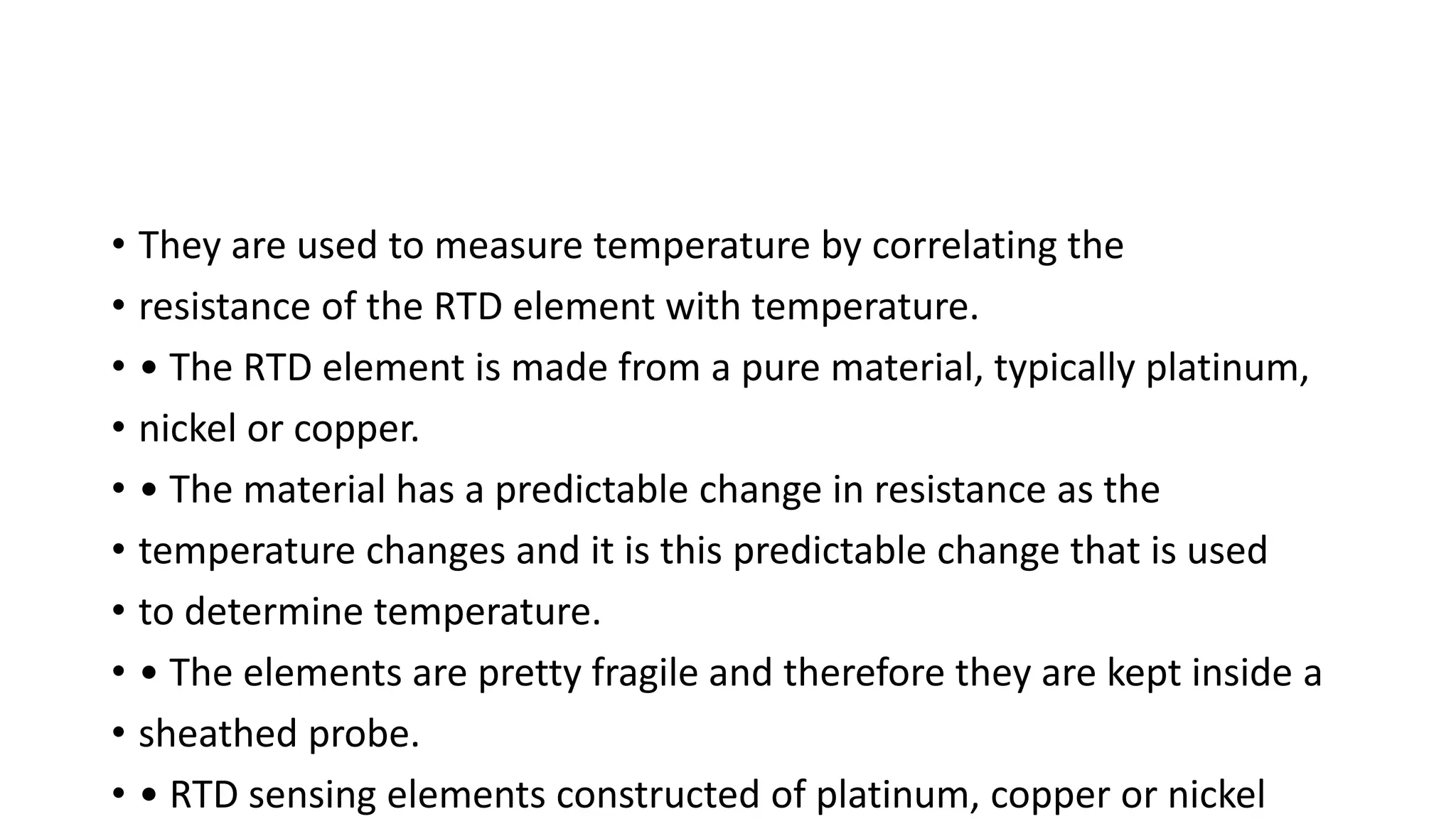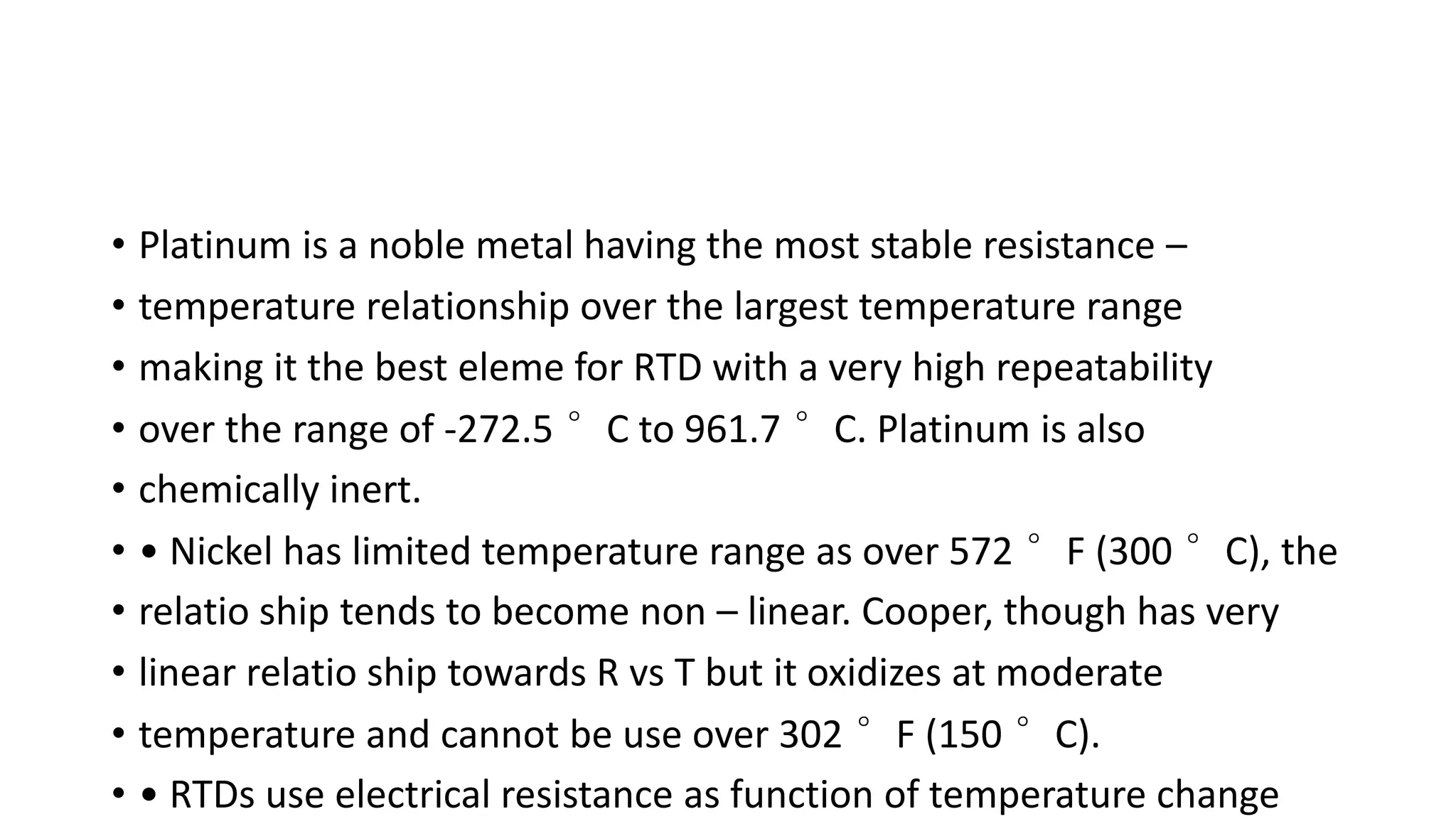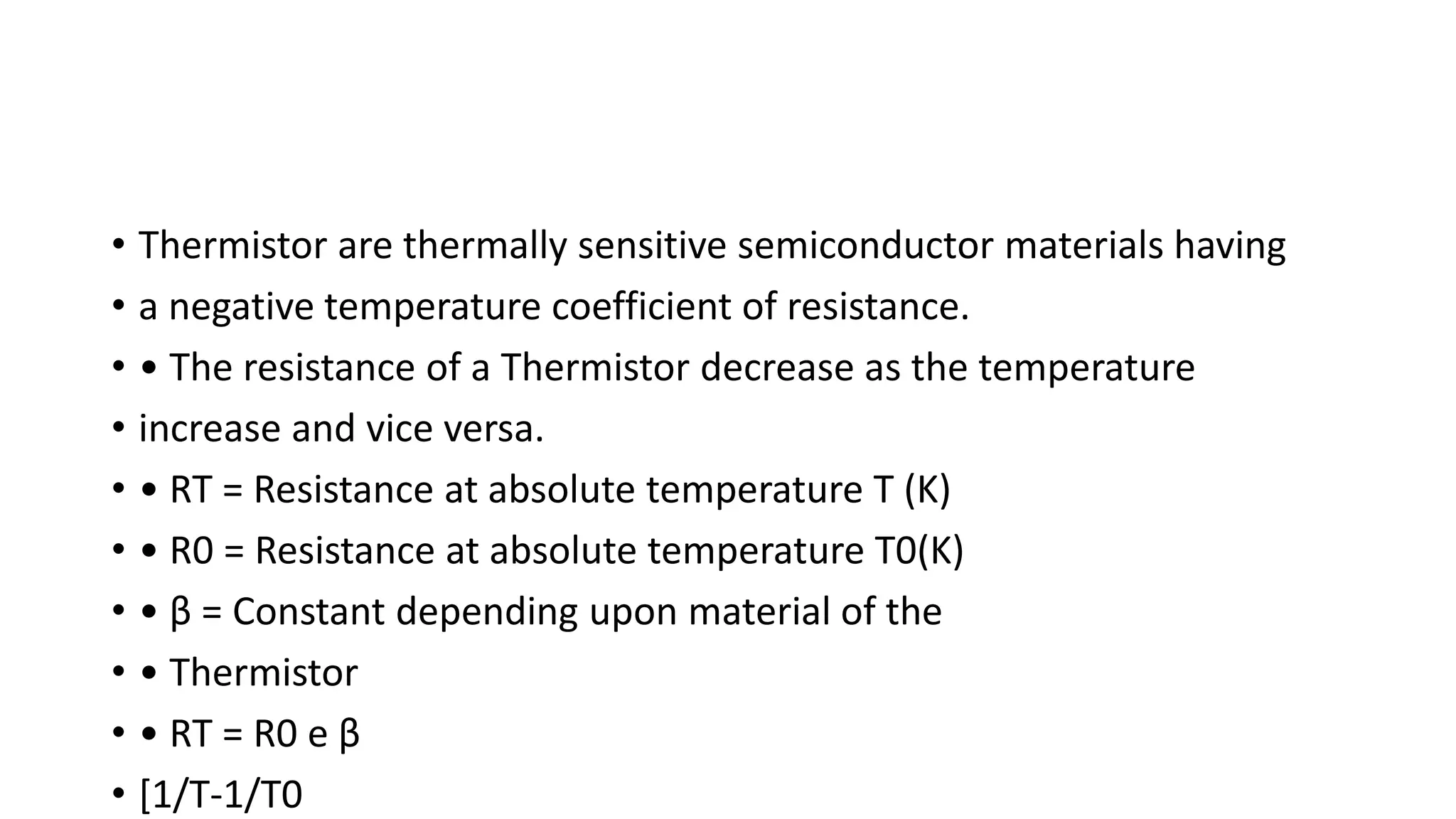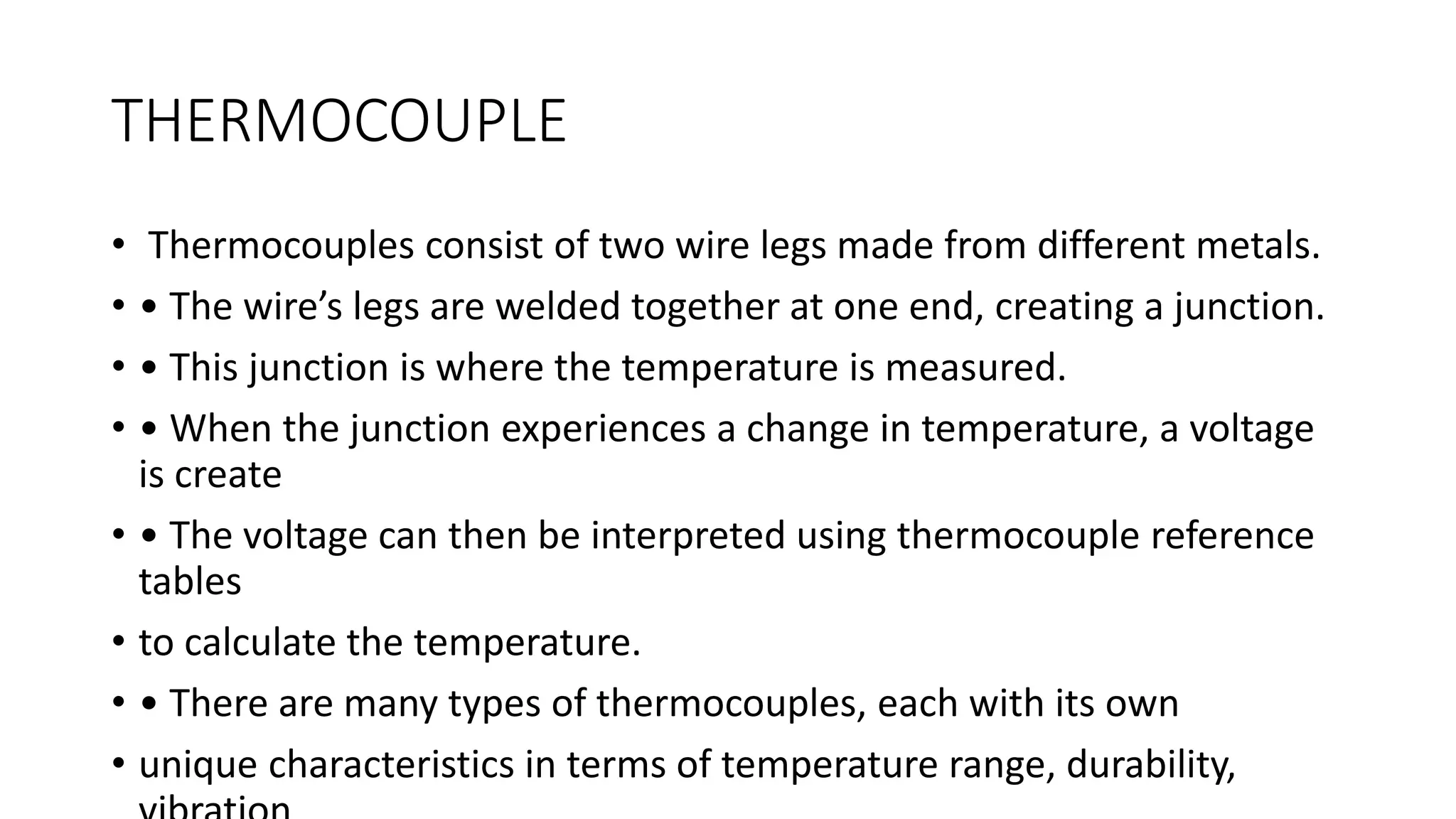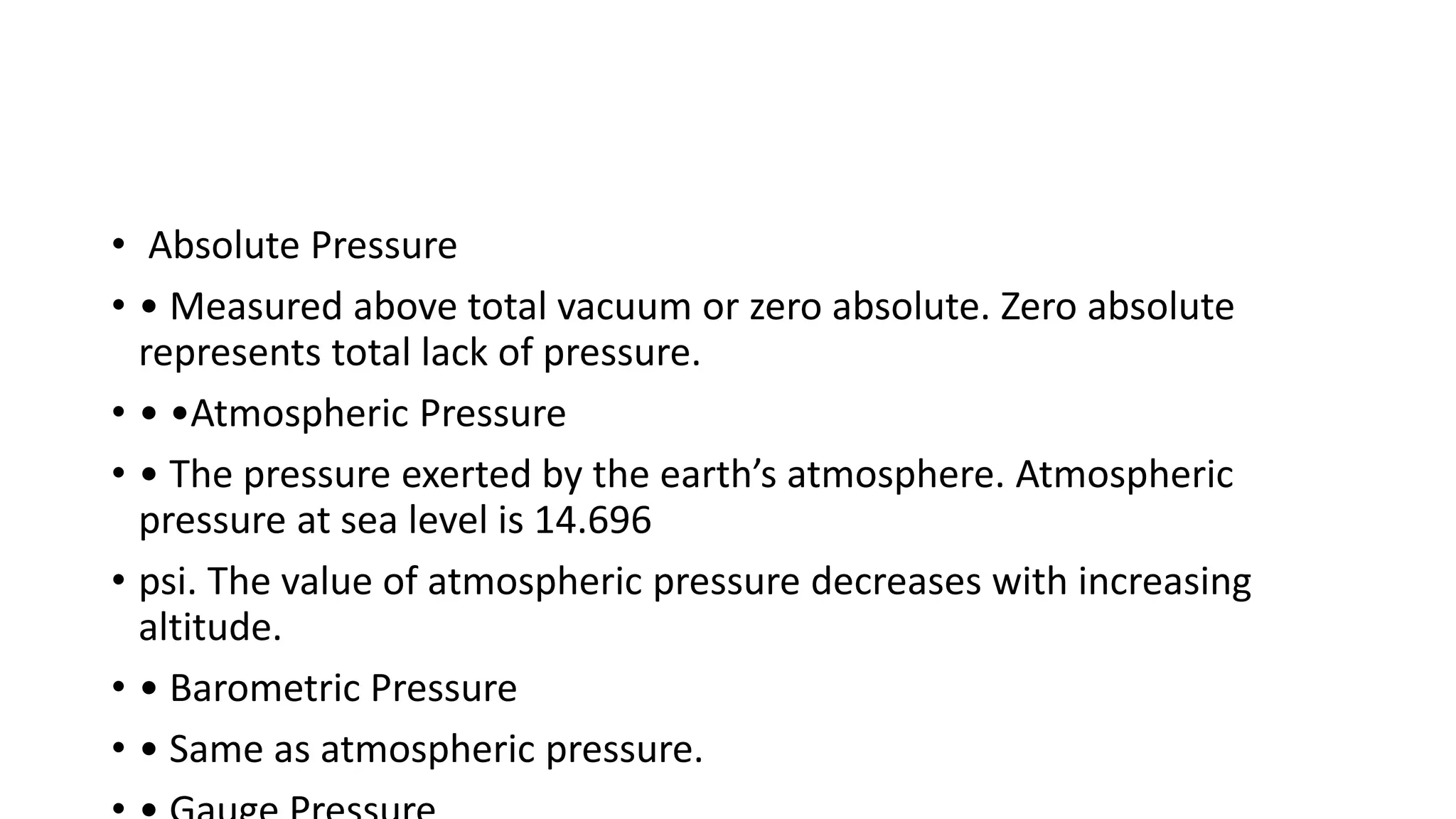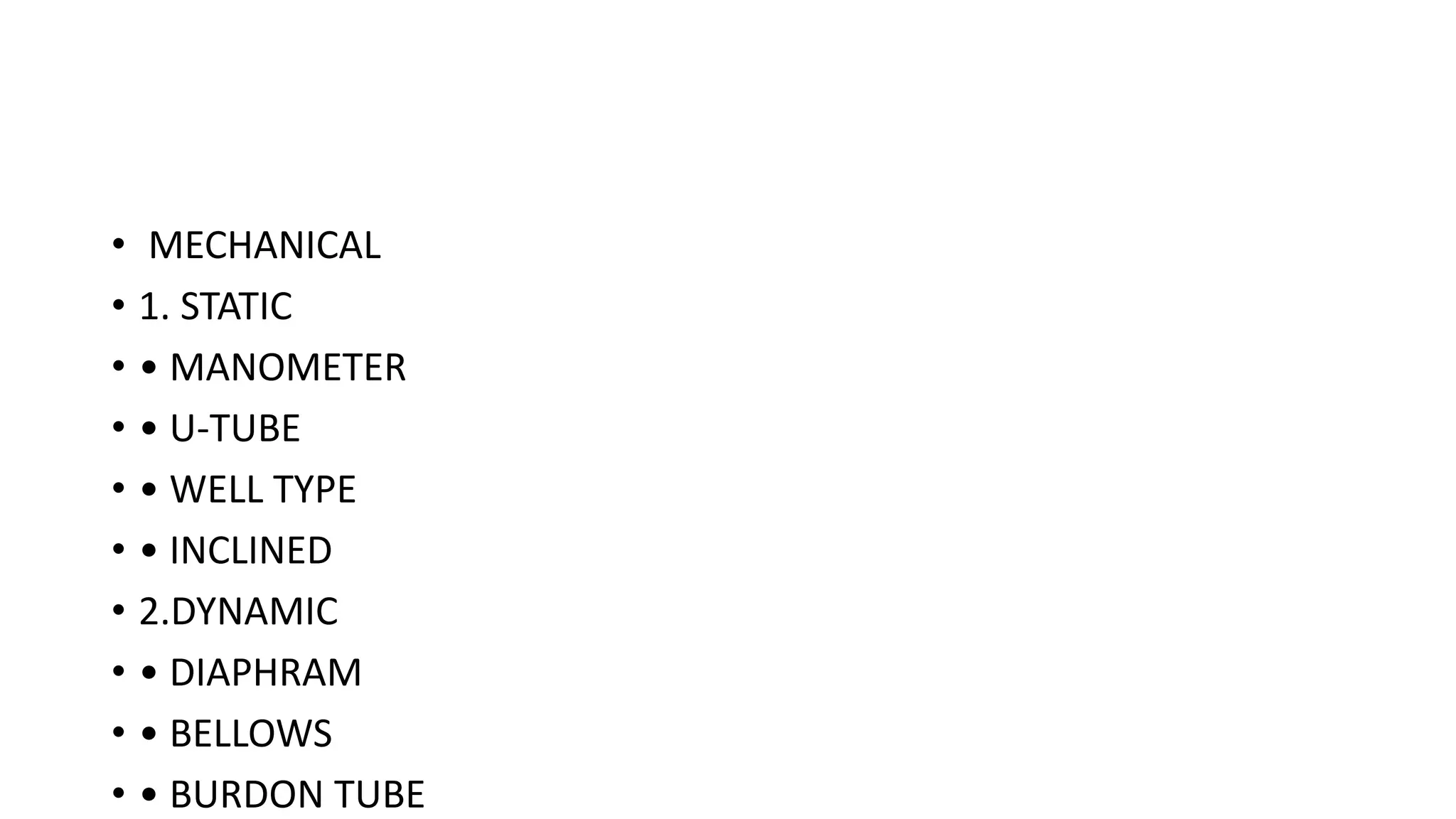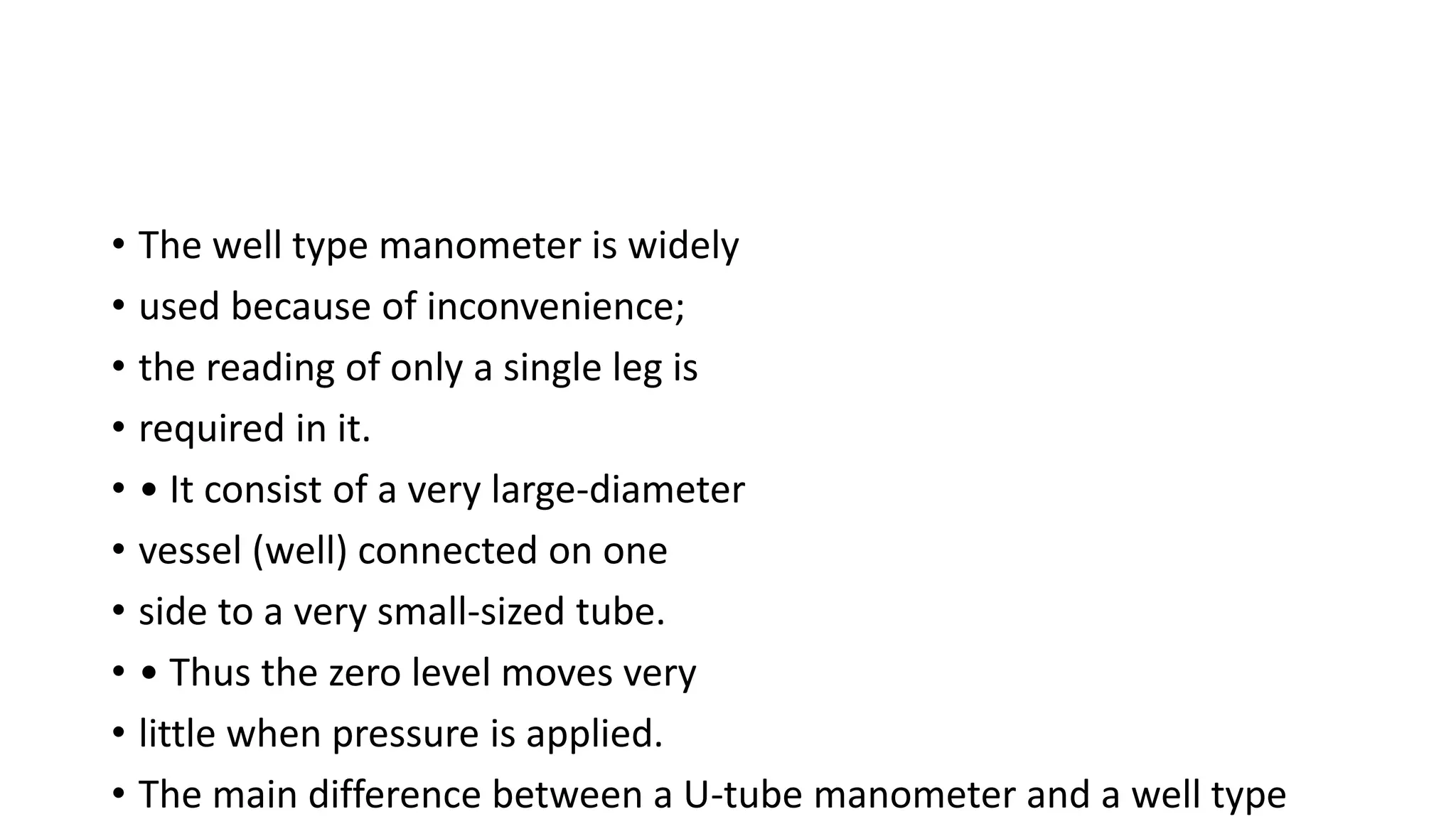This document provides information about various measurement techniques and instruments. It discusses metrology, which is the science of measurement and defines key terms like accuracy, precision, repeatability, and reproducibility. It describes different types of thermometers like liquid-in-glass, bimetallic, resistance temperature detectors (RTDs), thermistors, and thermocouples. It also covers pressure measurement instruments like manometers, diaphragms, and bellows.









![• Temperature is a measure of the thermal energy in the body.Normally
• measured in degrees [°]using one of the following scales.
• • Fahrenheit.[°F]
• • Celsius or centigrade. [°C]
• • Kelvin .[°K]](https://image.slidesharecdn.com/mecha1-231104110138-d782a759/75/Mech_A_1-ppt-10-2048.jpg)
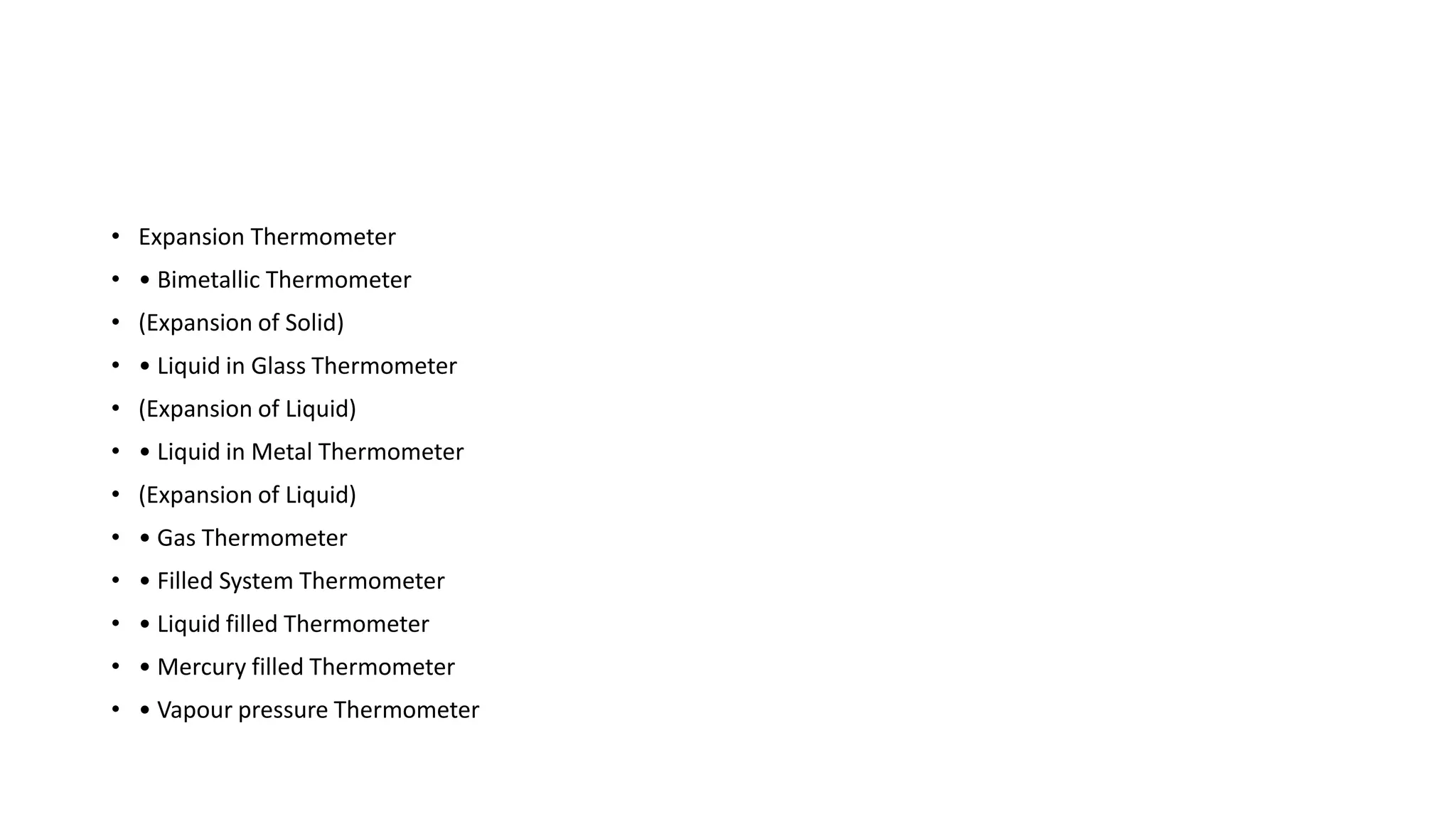




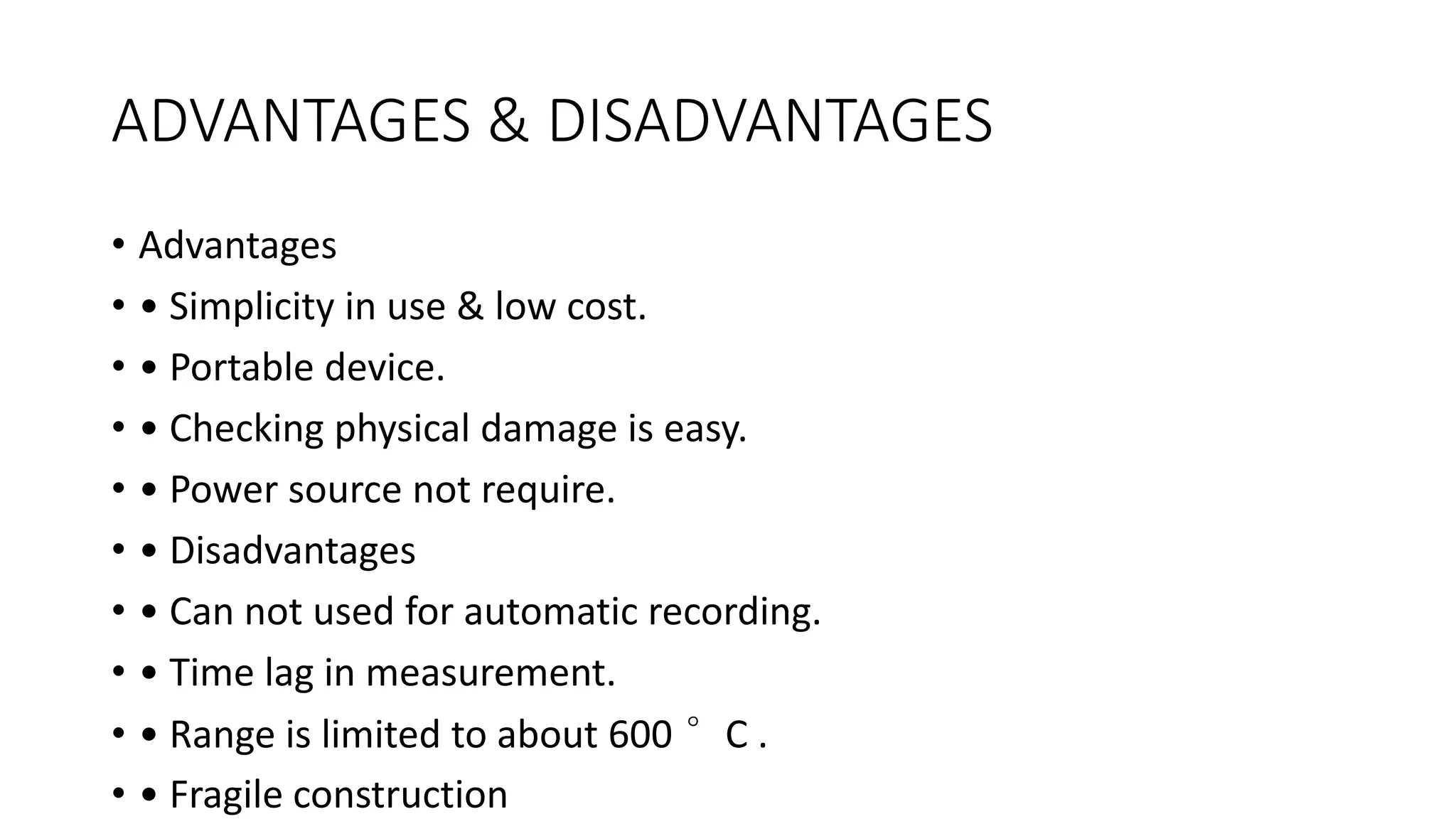
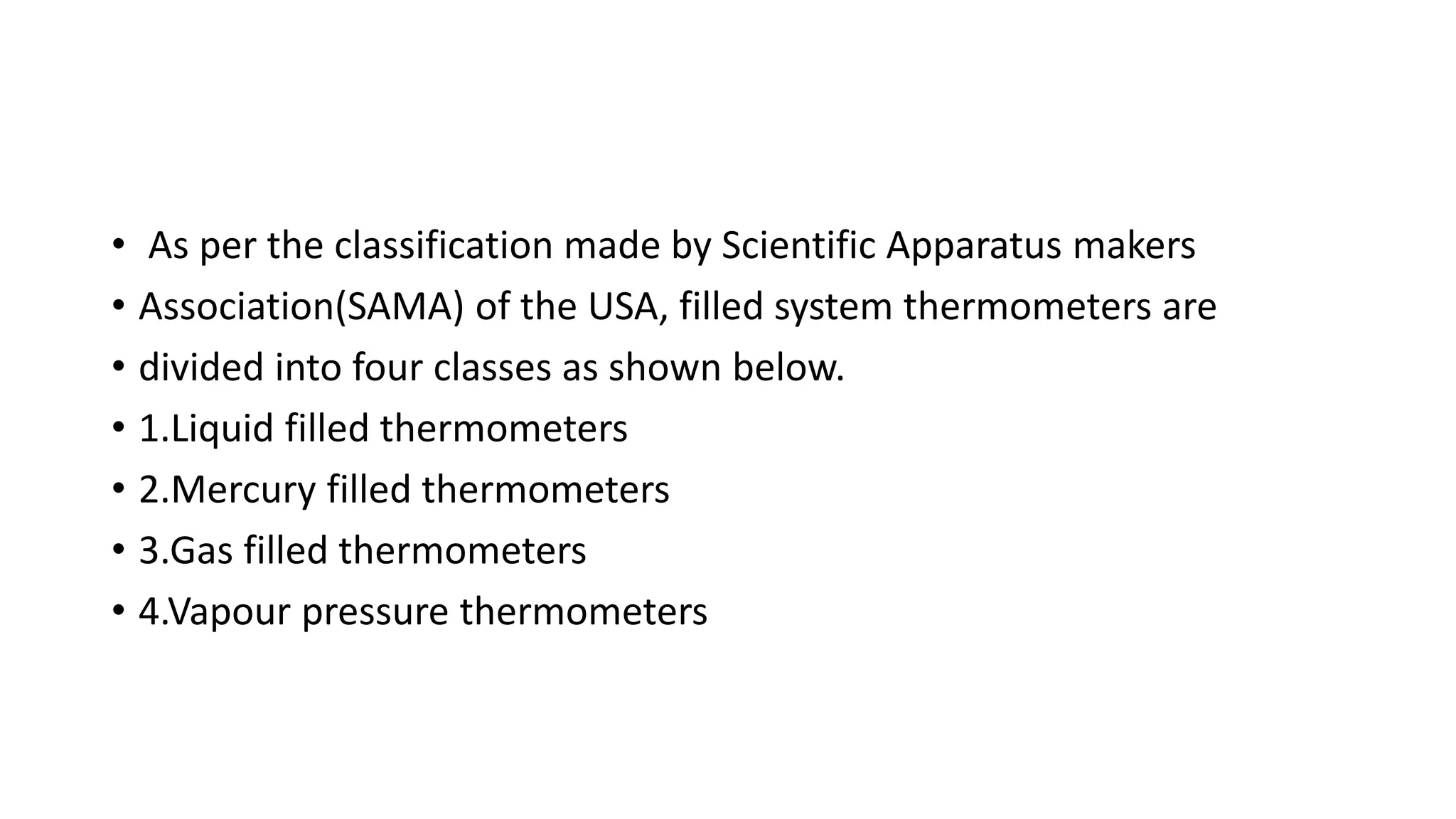


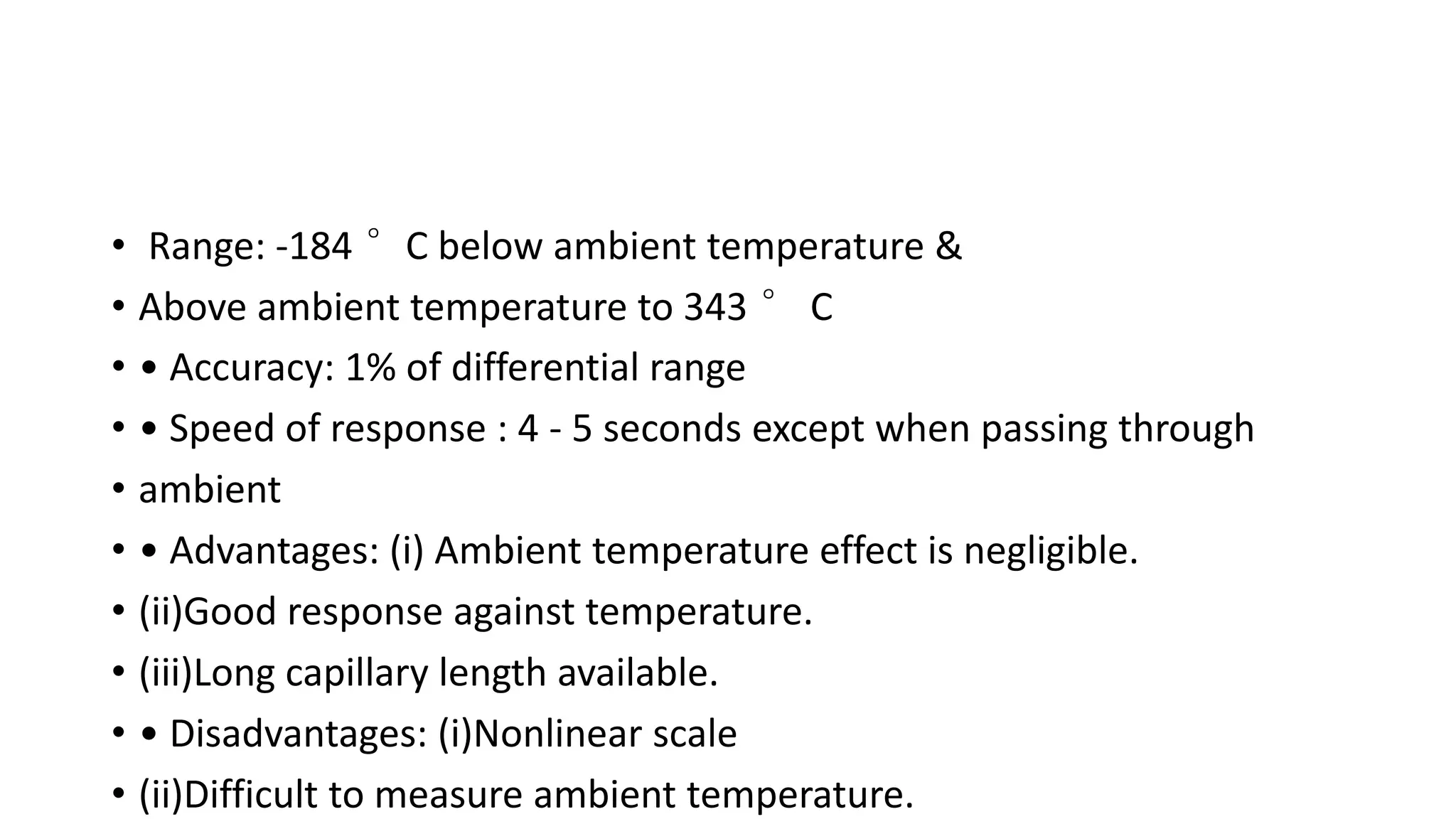

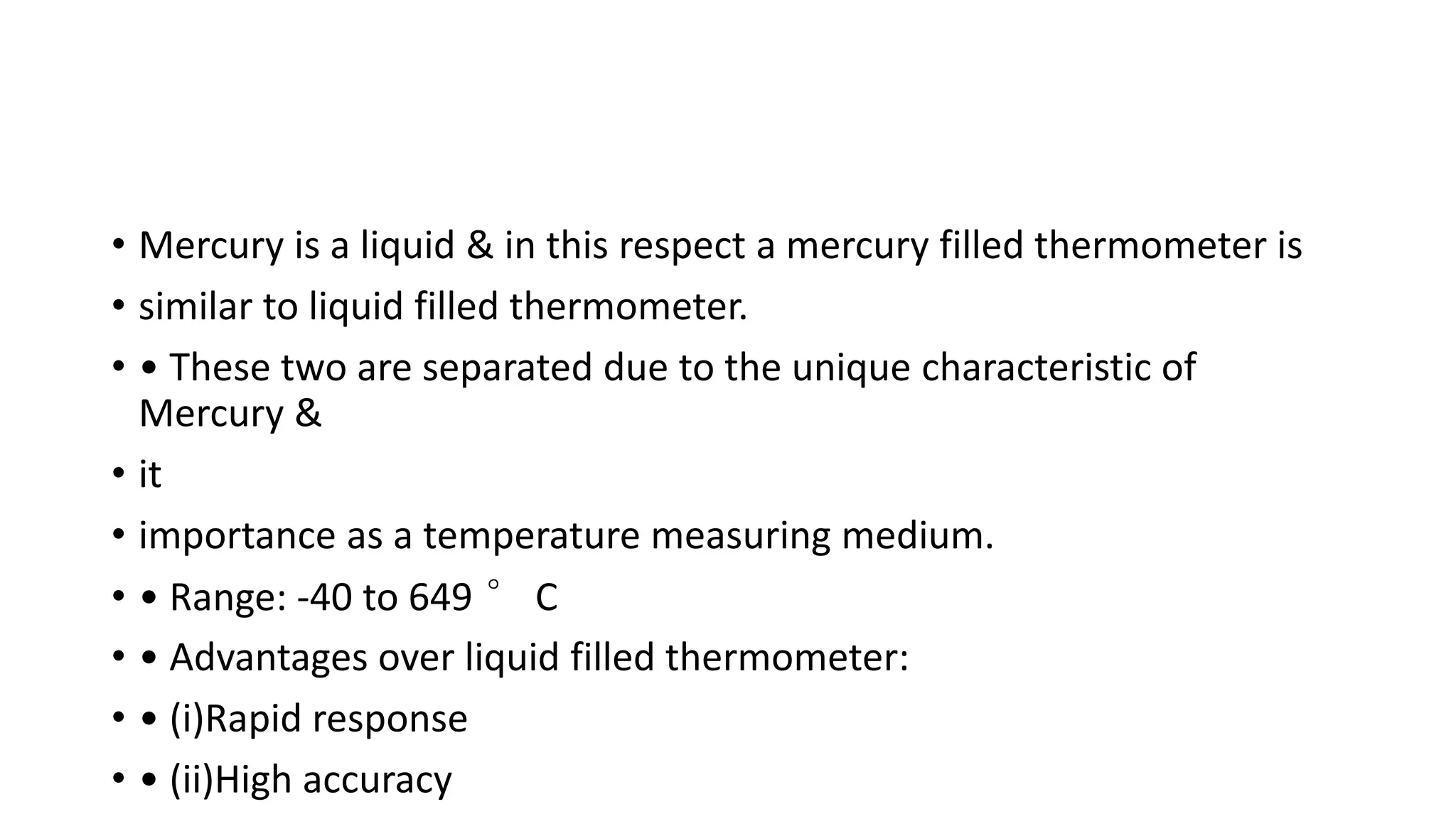
![• esistance Temperature Detectors (RTD)
• • Use change in resistance of suitable metals to indicate
• temperature. Commonly used metals are platinum, nickel, copper
• which show a positive change in resistance with increase in
• temperature.
• • The variation in resistance R at temperature can be written as
• • RT = R0 [ 1 + α T + β T2]
• • RT = Resistance at température T °C or RT = R0[ 1 + α T]
• • R0 = Resistance at 0° C
• • α and β are constant whose value depends on the RTD materials.](https://image.slidesharecdn.com/mecha1-231104110138-d782a759/75/Mech_A_1-ppt-23-2048.jpg)

